On October 3, 2017, ILTech Company conducted a test of Radar Grounding Equipment (GPR / Georadar), Opera Duo model - 4-wheel-drive configuration of IDS GeoRadar, Italy in Ho Chi Minh City. . Test results show that Opera Duo can detect and map water supply / drainage pipes, underground cables, etc. made of metal or nonmetal materials at different depths.
Following the testing session in Ho Chi Minh City on October 3, October 17 and October 19, 2017, ILTech Company continued to conduct two tests of Opera Duo device in Dinh urban area. Cong, Hanoi and Dong Van Industrial Park, Ha Nam Province. The purpose of these two testing sessions is to evaluate more accurately the ground-penetrating radar technology in the detection and mapping of underground technical utilities and the ability of GPR equipment to operate under many different geological conditions. Here are some results obtained at the two testing sessions:
1. Testing in Dinh Cong Urban Area, Hanoi:
In Dinh Cong Urban Area, Hanoi, our technicians conducted a survey at 02 locations:
- Point 1: Making a scanning net including 11 horizontal and 9 vertical scanning lines, 0.5m horizontal scanning step, 0.5m longitudinal scanning step, the scope of the survey area is about 4x5m.
- Point 2: Making a scanning grid of 25 horizontal and 5 longitudinal lines, 1 m horizontal scanning step, 1m long sweeping step, the scope of the survey area is about 4x25m.
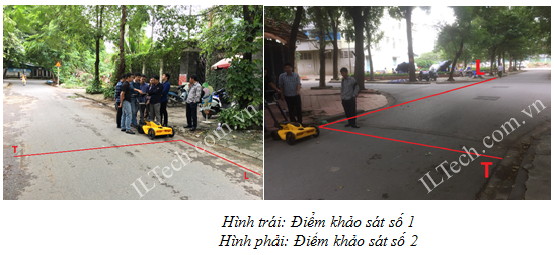
Some typical results:
At point 1: Based on the radar signal chart of the entire scanning surface, an object is found within a depth of about 0.57 - 0.67 m depending on the location and can be observed on all sides. horizontal scanning (circled in red), based on the signal pulse and observing the scene, it can be judged that this is a drainage pipe (concrete)
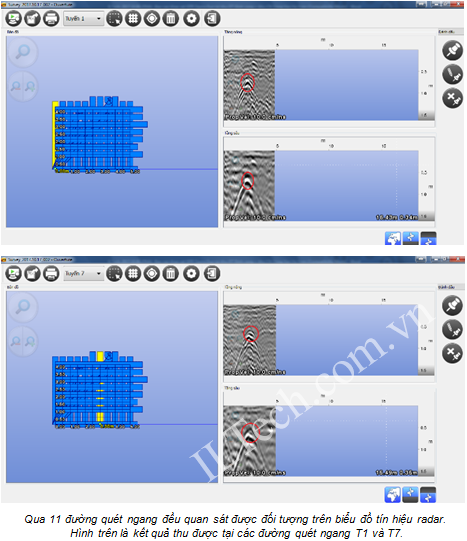
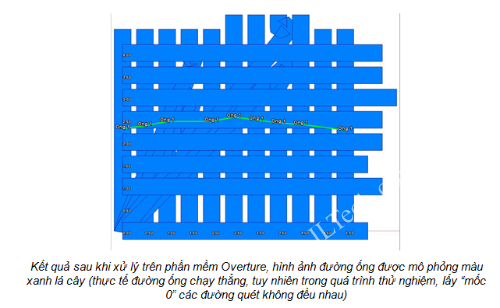
At point 2: 08 objects were found, including 01 object running along the length of the route (can be observed on the horizontal surface T), the remaining 7 objects crossed the vertical survey line (may be observed). close to the vertical scan L). Based on the signal pulse and observing the scene, it can be judged that these objects are water supply / drainage pipes, electric cables.
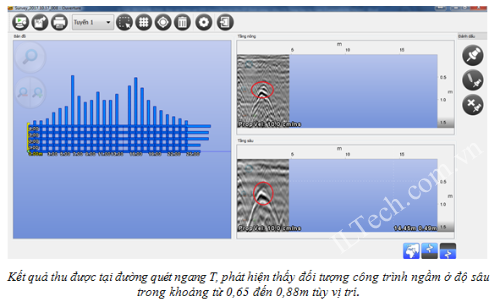
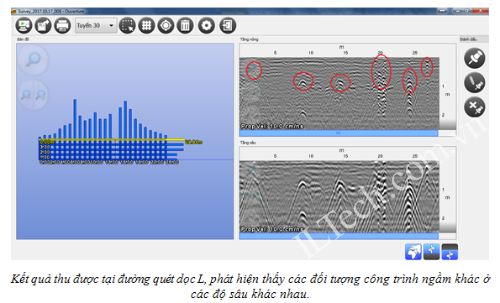
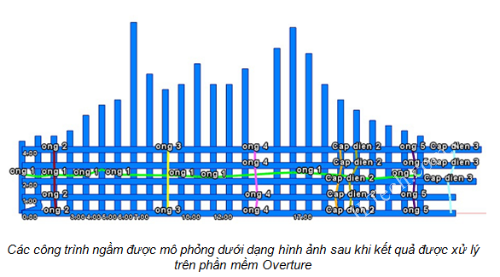
2. Testing in Dong Van Industrial Park, Ha Nam province:
At the Dong Van Industrial Zone campus, Ha Nam province, we conducted the survey at 01 point, with a scanning net of 6 horizontal and 6 vertical scanning lines, the size of the scanning line is 1m, the scope of the survey is 5x5m.

Some typical results:
Based on the radar signal graph of the entire scanning surface, an object is found within a depth of 0.59 - 0.74 m depending on the location, can be observed on all vertical scanning surfaces (circled) red), based on the signal pulse and observing the scene, it can be judged that this is a drainage pipe (concrete).
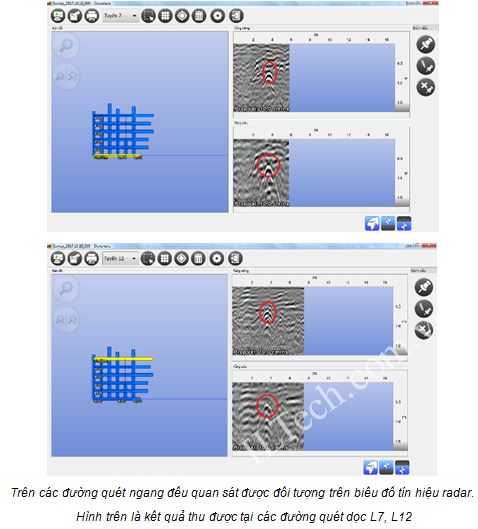
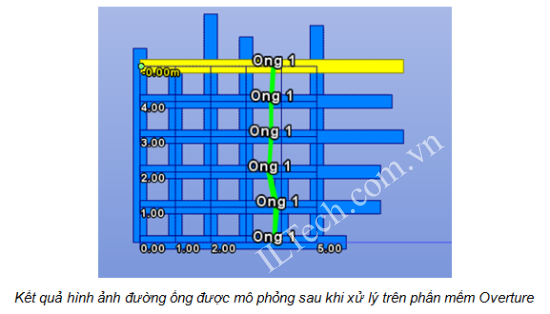
3. Conclusion
After 3 tests in Ho Chi Minh City, Hanoi and Ha Nam, we would like to give the evaluation of GPR technology in general and Opera Duo device of IDS GeoRadar (Italy) in particular as follows:
- By comparing the results with drawings and observation information at the scene, it can be seen that the GPR Opera Duo device has accurately detected the location and depth of the underlying objects made by metal or nonmetal.
- Geological conditions have a clear influence on the penetration ability of GPR equipment. However, the use of 250 and 700 MHz dual frequency antennas will help to survey both objects at shallow depth and depth with only one single scan. In addition, we want to increase the ability to penetrate deeply, we must choose the antenna (with screen) with lower frequency (and accept the resolution will be worse).
- The 250 and 700 MHz dual-frequency antennas of Opera Duo can detect objects of very small diameter, about 25-30mm or more (depending on the depth of the object).
- Opera Duo device using Ouverture data collection software has been Vietnamized, the software interface is intuitive and very convenient for users to manipulate from data collection to processing and mapping of the lower work. underground technical floor.
- The device is completely unaffected by electromagnetic interference due to the use of a screened antenna.